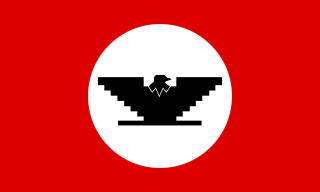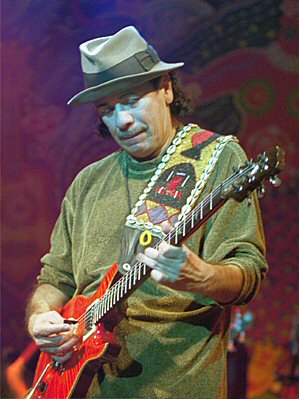History
The members of the band were born and raised in a middle-class neighbourhood within Quito. In the beginning they tried to gain awareness and recognition in the music scene by performing at local pubs and bars. After gaining in popularity, their music became known throughout the country through heavy airplay.
The main feature of Los Cruks (as they are known in their country) is to have tried from the early beginnings to rescue the values of Ecuadorian nationalism. Their music mixes rock and a wide range of styles such as pop, Afro-Latin music, funk, Latin American folk music, and many others, achieving the sound for which they are known.
Los Cruks have taken their music across Latin America and the US, sharing the stage with important similar style artists, showing the quality of Ecuadorian music to a lot of different countries.
As the Germany World Cup 2006 took place, they were invited to perform various live shows through the European country where they earned respect from the public because of their original style.
The band broke up in 2007, after launching their final album in 2006, Antrologia.
The music of Latin America refers to music originating from Latin America, namely the Romance-speaking regions of the Americas south of the United States. Latin American music also incorporate the Indigenous peoples of the Americas. Due to its highly syncretic nature, Latin American music encompasses a wide variety of styles, including influential genres such as cumbia, bachata, bossa nova, merengue, rumba, salsa, samba, son, and tango. During the 20th century, many styles were influenced by the music of the United States giving rise to genres such as Latin pop, rock, jazz, hip hop, and reggaeton.

Chicano rock, also called chicano fusion, is rock music performed by Mexican American (Chicano) groups or music with themes derived from Chicano culture. Chicano Rock, to a great extent, does not refer to any single style or approach. Some of these groups do not sing in Spanish at all, or use many specific Latin instruments or sounds. The subgenre is defined by the ethnicity of its performers, and as a result covers a wide range of approaches.

The most distinctive music of Uruguay is to be found in the tango and candombe; both genres have been recognized by UNESCO as an Intangible Cultural Heritage of Humanity. Uruguayan music includes a number of local musical forms such as murga, a form of musical theatre, and milonga, a folk guitar and song form deriving from Spanish and italian traditions and related to similar forms found in many American countries.
The music of Ecuador is a diverse aspect of Ecuadorian culture. Ecuadorian music ranges from indigenous styles such as pasillo to Afro-Ecuadorian styles like bomba to modern indie rock like "Cambio de Tonalidad" by Da Pawn.
Chilean music refers to all kinds of music developed in Chile, or by Chileans in other countries, from the arrival of the Spanish conquistadors to the modern day. It also includes the native pre-Columbian music from what is today Chilean territory.
Latin rock is a term to describe a subgenre blending traditional sounds and elements of Latin American and Hispanic Caribbean folk with rock music. However, it is widely used in the English-language media to refer any kind of rock music featuring Spanish or Portuguese vocals. This has led to controversy about the scope of the terminology.

Mexican rock music, often referred to in Mexico as rock nacional, originated in the 1950s. Standards by The Beatles, Elvis Presley, The Everly Brothers, Nancy Sinatra, and Chuck Berry were soon covered by bands such as Los Apson, Los Teen Tops, Los Twisters, Los Hitters, Los Nómadas, Los Rockets, Los Rebeldes del Rock, Los Locos del Ritmo, Los Crazy Boys, and Javier Bátiz, which later led to original compositions, often in English. The group "Los Nómadas" was the first racially integrated band of the 1950s. Their lead guitarist, Bill Aken, wrote most of their original material, including the raucous Donde-Donde, and co-wrote the material for their Sounds Of The Barrio album, which is still being sold. Their 1954 recording of She's My Babe was the first top 40 R&B recording by a Latino band. In the southwestern United States, Spanish guitar rhythms and Mexican musical influences may have inspired some of the music of American musicians Ritchie Valens, Danny Flores, Sam the Sham, Roy Orbison, and later, Herb Alpert. Initially, the public exhibited only moderate interest in them, because the media attention was focused on La Ola Inglesa.
Chilean rock is rock music and its corresponding subgenres produced in Chile or by Chileans. Chilean rock lyrics are usually sung in Spanish so can be considered as part of rock en español, although sometimes are sung in English as well.
Argentine rock is rock music composed or performed by Argentine bands or artists mostly in Spanish.

Rock en español is a term used to refer to any kind of rock music featuring Spanish vocals. Compared to English-speaking bands, very few acts reached worldwide success or between Spanish-speaking countries due to a lack of promotion. Despite rock en español's origins in the late 1950s, many rock acts achieved at best nationwide fame until the Internet consolidated the listeners. However, some rock en español artists did become internationally popular with the help of a promotional campaign from the mid-1980s to the mid-1990s called "Rock en tu idioma". Some specific rock-based styles influenced by folkloric rhythms have also developed in these regions. Some of the more prominent styles are Latin rock ; Latin alternative, an alternative rock scene that blended a Latin sound with other genres like Caribbean ska, reggae, and soca; or Andalusian rock, a flamenco-influenced style that emerged in Spain.

Calle 13 is a Puerto Rican alternative hip-hop band formed by stepbrothers Residente and Visitante, along with their half-sister iLe, also known as PG-13.

Kudai are a Chilean pop rock band from Santiago, Chile, formed in early 2000. The group is composed of Pablo Holman, Bábara Sepúlveda, Tomás Manzi, and Nicole Natalino, who left the group in 2006 citing personal reasons, and was replaced by Ecuadorian Gabriela Villalba for three years. After the group disbanded in 2010, in November 2016, the band confirmed their return to the scene with the original members.
Pasillo is a Colombian genre of music popular in the territories that composed the 19th century Viceroyalty of New Granada: Born in the Colombian Andes during the independence wars, it spread to other areas; especially Ecuador and, to a lesser extent, the mountainous regions of Venezuela and Panama. Venezuelans refer to this style of music as "vals". Today, it has incorporated more European features of classical dance, such as Viennese waltz in Colombia and features of sanjuanito and yaraví in Ecuador. As it spread during the Gran Colombia period, pasillo also absorbed the individual characteristics of isolated villages. This gives it an eclectic feel; however, the style, tone, and tempo of the music differ in each village and indeed between each country.
Colombian Rock is rock music from Colombia. The most common styles of Colombian rock are based on Rock en Español, indie rock, as well as the traditional focus of hard rock Colombian bands.

Juan Fernando Velasco is an Ecuadorian musician.
Kiruba is an Ecuadorian pop group that originated from the 2002 Ecuadorian season of the reality television show Popstars. The original members of the group were Maria Jose Blum, Diana Rueda, Mariela Nazareno, Gabriela Villalba, and Cecilia Calle.
Luis Humberto Salgado was an Ecuadorian composer. He was regarded as one of the most influential and prolific composers of his country.
Ecuadorian rock encompasses a broad and diverse independent music scene. The genre involves different styles including hardcore punk, metalcore, gothic metal, heavy metal, alternative rock, punk, ska, blues, and grunge.

Instituto Nacional Mejía is a public secondary educational institution of Quito. It was founded on June 1, 1897 by Eloy Alfaro Delgado, then president of Ecuador.

Luis Aguilar Monsalve is an Ecuadorian writer, critic, and professor emeritus at Hanover College in the United States.








